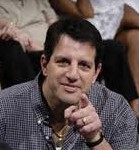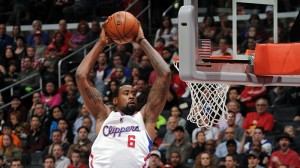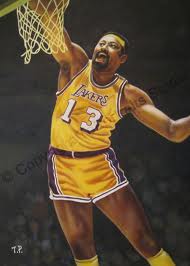 Please, people, don’t panic! The strategy of fouling bad foul shooters, incessantly creating a parade to the free throw line, will die a quiet death.
Please, people, don’t panic! The strategy of fouling bad foul shooters, incessantly creating a parade to the free throw line, will die a quiet death.
I’m not talking about a team that is behind by 6 with a minute to go trying to get the ball back. I’m talking about the “Hack-a-Shaq” – or Dwight, or DeAndre – strategy of putting a 40 percent shooter on the line 40 times a game.
Yes, it is bad television. It kills the flow of the game. And it is plain ugly to watch.
But the reason it will not catch on as a strategy is much simpler than that.
It doesn’t work.
We don’t need a complicated rule outlawing it. Don’t spend sleepless nights cursing the basketball gods. It has been tried on several players at different times under different circumstances and the results are pretty clear.
It doesn’t work.
The math is simple. Teams typically shoot between 42 percent and 47 percent from the field. They shoot between 70 percent and  75 percent from the line. So the conventional wisdom is if a player shoots 42 percent from the line, let’s keep fouling him over and over, turning 75 percent shots into 42 percent shots.
75 percent from the line. So the conventional wisdom is if a player shoots 42 percent from the line, let’s keep fouling him over and over, turning 75 percent shots into 42 percent shots.
The obvious flaw in that thinking is that all a team is really doing is turning a 45 percent shot (a field goal attempt) into a 42 percent shot (a bad free throw). So instead of a team making four shots out of every 10 and scoring eight points, you have one player making 1-of-2 free throws eight times in 10 trips to the line, scoring eight points. In addition, you create 8-12 offensive rebound opportunities as the guy sprays bricks all over the gym.
That’s not much of a difference, especially in the playoffs when shooting percentages drop anyway. You also pay a heavy price for doing it. When you foul a player 20 times a game in excess of what you normally do, bad things happen, like:
- You are always in the penalty, making every foul worth two shots
- You create foul trouble for your players
- You kill your team’s offensive flow, with no transition opportunities
Besides, there are several good reasons why you don’t want a rule against fouling bad shooters. For instance, in the last minute, a team trailing in a close game may need to foul to regain possession.
I put the issue of intentional fouling in the category of a player weakness that coaches are paid to exploit. It is no different than:
- Going at a guy in foul trouble
- Isolating a weak defender
- Denying the point guard and forcing a big guy to handle the ball
- Leaving open a poor shooter
- Forcing a third or fourth option to take the last shot
 All of these player skill issues are elements of the game that need to be managed – just like dealing with a bad foul shooter. While there have been some famously bad foul shooters throughout history – including Wilt Chamberlain, one of the greatest players ever – the ability to knock down a big free throw in crunch time is a skill in itself.
All of these player skill issues are elements of the game that need to be managed – just like dealing with a bad foul shooter. While there have been some famously bad foul shooters throughout history – including Wilt Chamberlain, one of the greatest players ever – the ability to knock down a big free throw in crunch time is a skill in itself.
If Commissioner Adam Silver and the NBA Competition Committee start regulating this type of thing, then they will be on a slippery slope of rule management.
The bottom line is that you win games by making basketball plays. You win playoff games and championships by being able to make adjustments, read situations and make big shots. Most of the time when you try too hard to exploit something that is unnatural for your team, you do more harm than good.
How many times have you seen a team try to get a foul on a specific player, slow a game down to protect a lead, put a face-up player in the post against a smaller defender, or some other play that is not in their game plan? It usually backfires.
My advice is to play the game. The time to foul De Andre Jordan is when he gets the ball while rolling to the basket or too deep in the post to stop. Then hack the crap out of him to prevent a three-point play. Now you are turning a 70 percent shot into a 40 percent shot.
Then when you need to put him on the line in the last minute, his nerves might kick in and he will shoot 15 percent.
Why give him 30 practice shots?
Danny Schayes is a Director of Business Optimization at Intensity and a leader in the business of professional sports. Schayes frequently advises sports organizations in complex business matters that include contract negotiations, pricing strategy, marketing optimization, and executive leadership. Follow him on Twitter.
Basketball is supposed to be a non-contact sport. When a player fouls another player the game stops and everybody stands around and free-throws happen and that is b-o-r-i-n-g.
I think the game would be much better if after a foul, the team that was not committing breaches of the rules has the choice to take the ball out of bounds with a new shot clock (or 14 seconds, debatable) or to shoot the free throws.
That would change the game back to basketball instead of the wrestling matches that now take place.
Learn to pass the ball and run plays and shoot well or lose. How refreshing that would be.